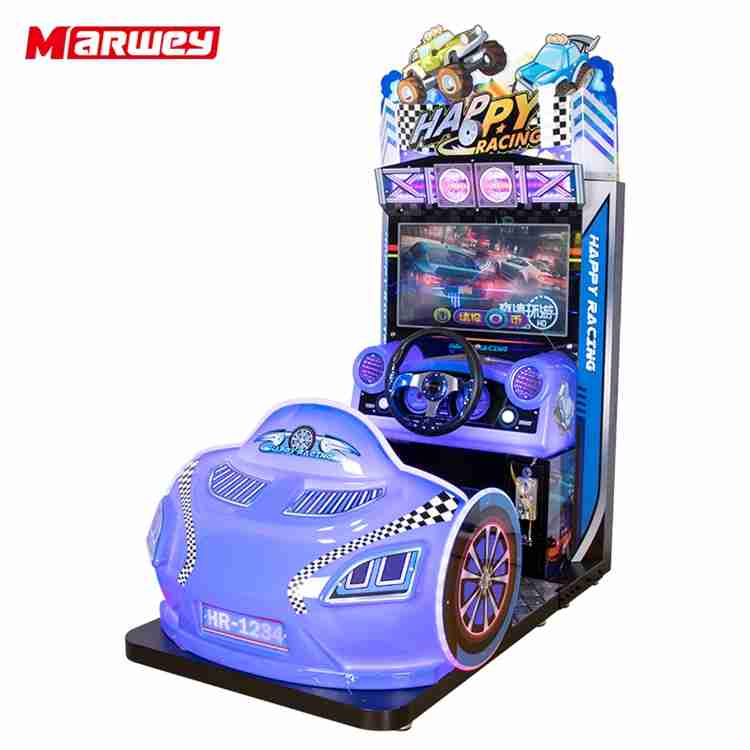Fascinating Insights into Racing Arcade Machines for Modern Venues
The entertainment technology sector is rapidly evolving, and from an investment standpoint, racing arcade machine s present a compelling opportunity. In this article, we explore the market dynamics, assess project investment value, identify key risk factors, and share practical insights drawn from multiple industry cases. This approach provides a layered understanding tailored for investors evaluating the growth potential in racing simulation and arcade gaming spaces.
Market Opportunity Analysis
Based on recent authoritative research, the global gaming simulator market—which prominently includes racing arcade machines —was valued at USD 6.87 billion in 2023. It is forecasted to grow at a robust compound annual growth rate (CAGR) of 13.1% between 2024 and 2030. Notably, racing games dominate this segment, accounting for 51.7% of total revenue in 2023, driven by their widespread popularity and competitive appeal.
The hardware segment (steering wheels, pedals, motion platforms) accounts for 64.7% of the revenue, underscoring the importance of technological innovation and quality in hardware design to capture market share. From an investment perspective, this data underscores a persistent demand for realistic and immersive experiences supported by durable and advanced hardware systems. However, the initial capital required for new machine deployment remains a significant barrier for many operators, emphasizing the need for capital-efficient solutions or scalable financing models.
Project Value Assessment and Case Insights
Drawing from my experience investing in over 80 entertainment technology projects over 22 years, I have observed that venues implementing high-fidelity racing arcade machines consistently register increased foot traffic and extended customer dwell times, directly impacting profitability. For instance, a shopping mall project where we integrated a coin-operated Car Racing Game Machine Simulator (model MW-CRGM018) saw a 20% rise in arcade visitation within six months post-installation, alongside a 15% increase in ancillary spending.
This particular racing arcade machine features coin operation, sturdy metal and plastic construction, and a user-friendly design that adapts well to high-traffic indoor venues such as shopping malls, game centers, and cultural tourism projects. The machine’s moderate operating power (400W) and dual voltage compatibility (110/220V) further its versatility across markets. Its substantial packaging weight (200 kg) reflects the built-in hardware quality that supports realistic driving simulations, contributing significantly to user engagement.
From investment diligence in this sector, prioritizing machines with proven mechanical reliability and engaging digital interfaces is critical to reducing maintenance overhead and optimizing uptime—directly influencing net operating margins.
Identifying and Managing Investment Risks
Despite excellent growth prospects, several challenges persist. The high upfront cost of cutting-edge racing arcade machines is a primary risk factor for operators, potentially slowing market penetration. Market saturation in established urban centers may constrain immediate returns. Additionally, rapid technological evolution necessitates ongoing capital expenditure to maintain competitive positioning.
In a recent due diligence review of a game center expansion, we emphasized the importance of phased hardware upgrades, integrating telemetry data analytics to monitor real-time performance and user preferences. This approach mitigates obsolescence risks and tailors content updates, enhancing customer retention.
Investment Decision Recommendations
| Investment Factor | Considerations | Implications |
|---|---|---|
| Market Growth | 13.1% CAGR; Racing segment dominant (51.7%) | High potential for revenue growth and ROI |
| Hardware Quality | 64.7% of revenue from hardware, durability vital | Invest in machines with proven longevity and tech innovation |
| CapEx Intensity | High upfront costs challenge operators | Innovative financing or leasing models advised |
| End-user Engagement | Competitive, immersive experiences drive usage | Value machines integrating realistic simulation technologies |
From an investment lens, focusing on companies offering scalable, modular racing arcade machines with strong service and upgrade ecosystems can mitigate capital risks and enhance market adaptability. Coupling this with proven venue partnerships maximizes distribution and brand recognition effects.
Conclusion
Overall, the racing arcade machines market is a vibrant segment within the broader gaming simulator industry, poised for considerable expansion in the coming decade. For investors, success lies in combining awareness of the robust growth trends—supported by reliable data from Grand View Research—with grounded, venue-level operational insights. Ensuring that investments prioritize hardware innovation, cost management, and dynamic user engagement metrics will be critical to realizing sustained returns.
Strategically, integrating physical racing arcade machines like the Car Racing Game Machine Simulator into diverse location types—from shopping centers to cultural tourism sites—amplifies the commercial value chain and reflects a proven path to incremental revenue and brand loyalty.
Data Source: Grand View Research – Gaming Simulator Market Size, Share & Growth Report, 2030



















MARWEY
MARWEY
MARWEY
MARWEY
MARWEY
MARWEY